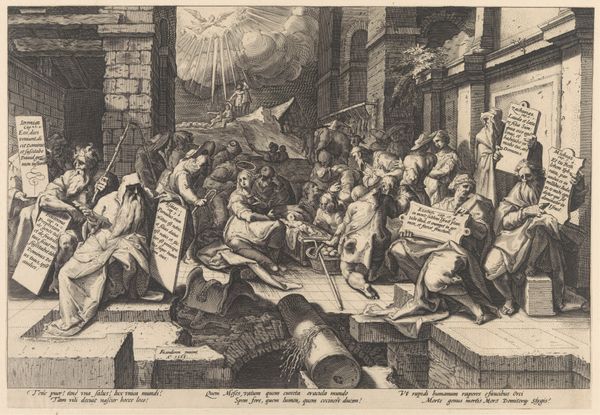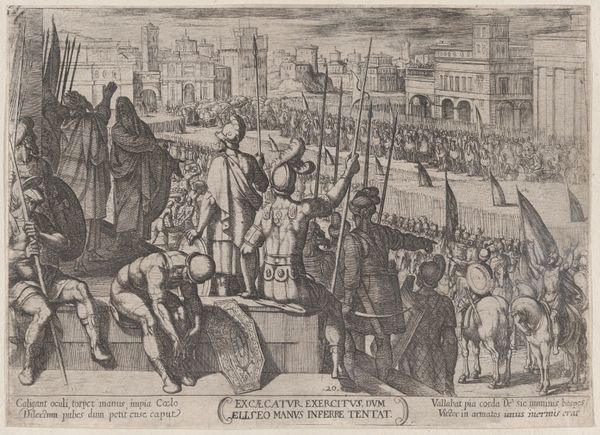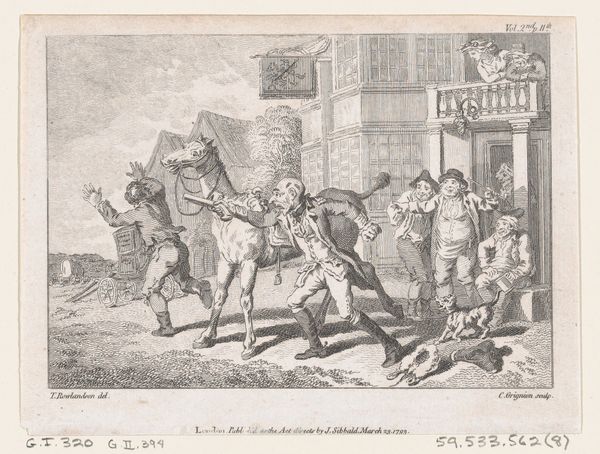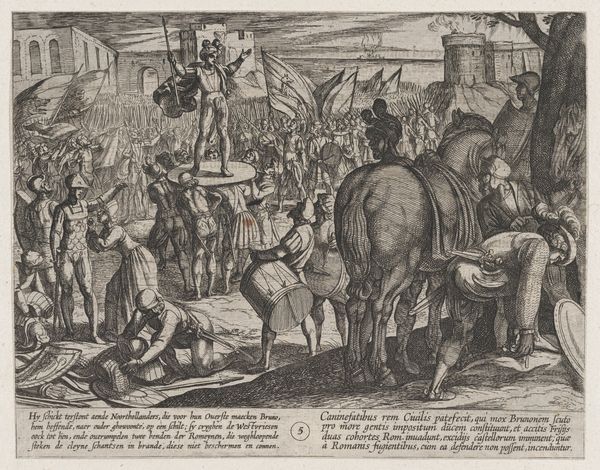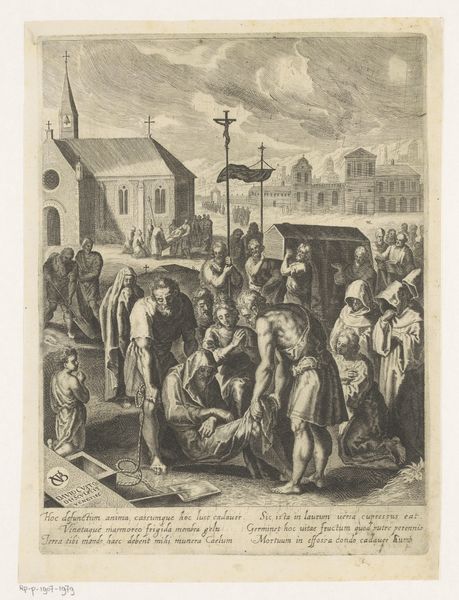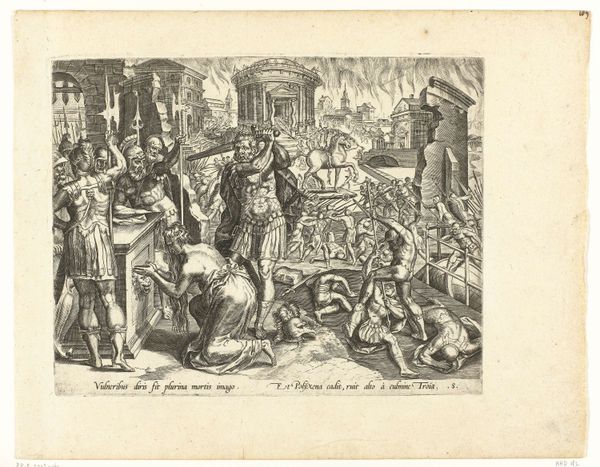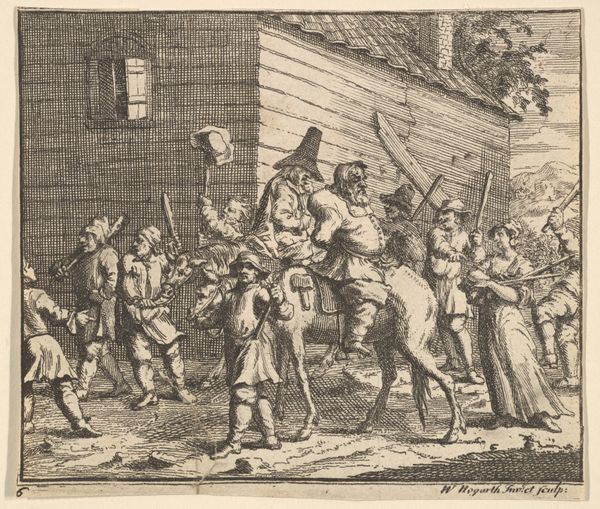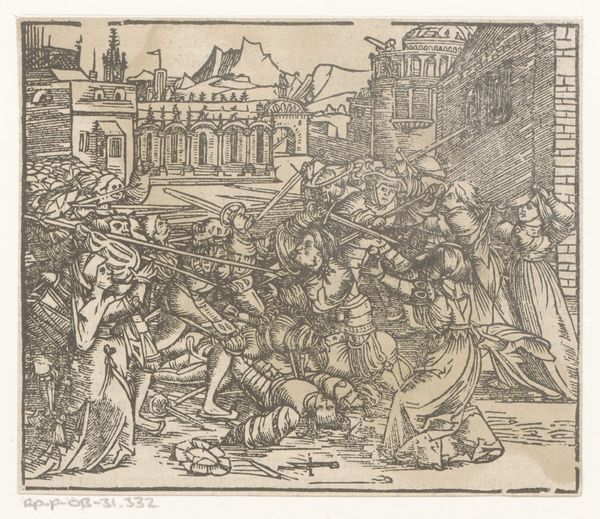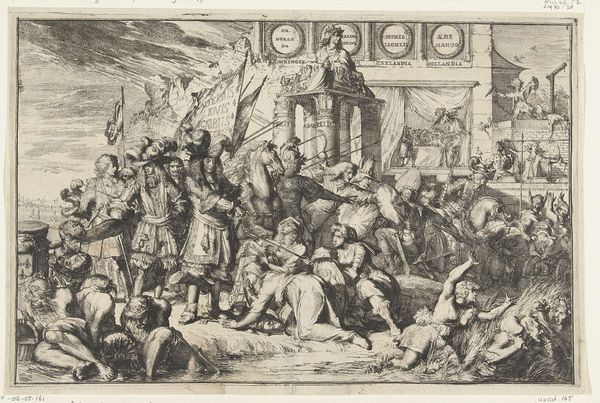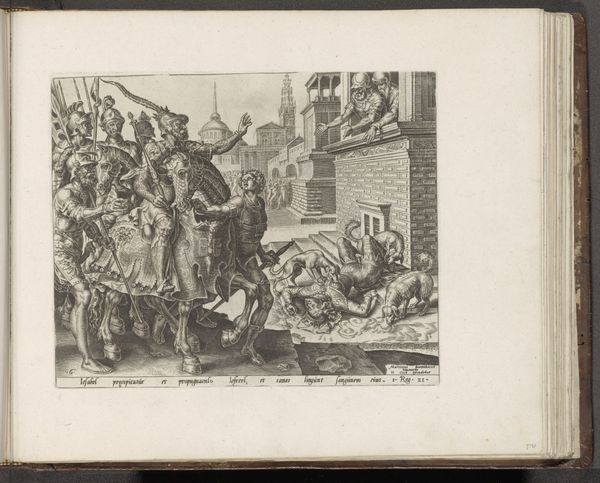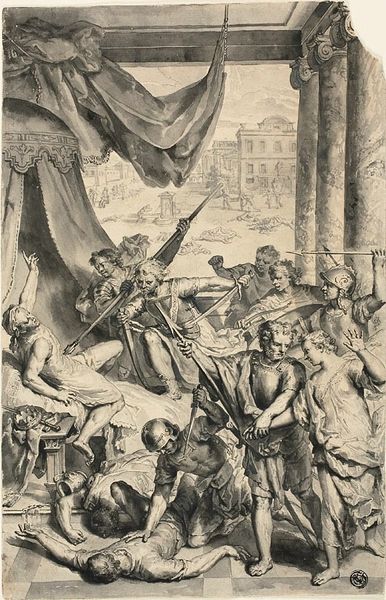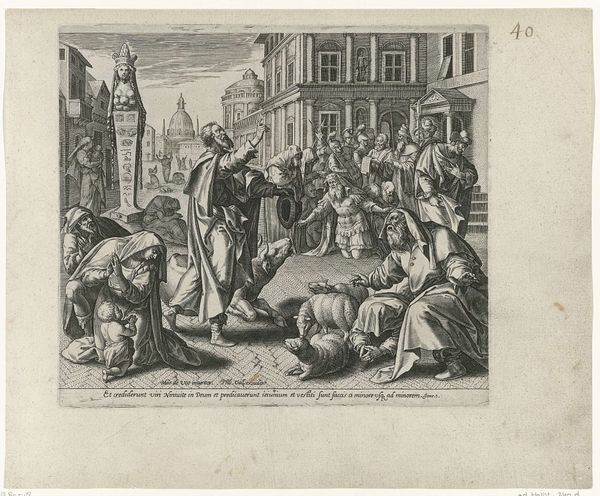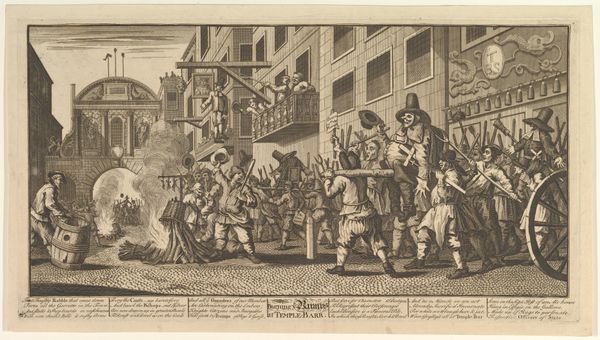
print, engraving
#
narrative-art
#
baroque
# print
#
old engraving style
#
history-painting
#
engraving
Dimensions: height 210 mm, width 248 mm
Copyright: Rijks Museum: Open Domain
Curator: Here we have a print called "Izebels lichaam wordt door de honden opgevreten"—"Jezebel's body is devoured by dogs"— dating from around 1600 to 1652. It’s currently held here at the Rijksmuseum. Editor: It’s undeniably graphic, this scene. The textures, achieved solely through engraving, feel incredibly harsh, almost like a form of visual violence mirroring the subject matter. The rigid lines used for the buildings, and softer ones to suggest depth feel so detailed and create quite a sense of dread. Curator: The print illustrates a pivotal moment from the Old Testament. Jezebel, the Phoenician princess who became Queen of Israel, met a gruesome end, pushed from a window and devoured by dogs as prophesied, you know as punishment for leading the kingdom astray, promoting the worship of Baal. Consider it within a framework of religious and political power struggles of the time, how the subjugation and ultimate annihilation of a powerful woman sent a clear message. Editor: I am intrigued by how the architecture really frames and guides the eye through each plane. And although horrific, the detail that focuses on each strand of the horses hair brings out this beautiful formal technique, even though it’s used to portray chaos. It's Baroque but with a certain level of cold detachment, in contrast to some warmer uses of chiaroscuro. Curator: And let's look at how gender intersects with religious and political authority here. Jezebel's story has long been interpreted as a warning against female power and influence when wielded outside prescribed roles. Consider the enduring patriarchal interpretations of her story in religious and secular narratives. Editor: Despite its limitations, the composition really pulls the eye towards Jezebel, the dogs, then outward toward the tower which leads back into the foreground to view the people. Almost a full loop that always circles back to this moment in the bottom right corner. The contrast, it cannot be unseen. Curator: Yes, absolutely, a fascinating insight, thank you. And, I think, hopefully our discussion provides a fuller appreciation of the complex interplay of history, gender, and belief represented in this rather disturbing print. Editor: Indeed, seeing it this way certainly enriches how we process and decode it now.
Comments
No comments
Be the first to comment and join the conversation on the ultimate creative platform.
